Cultural breakfast: Cooking traditional Hong Kong porridge and soy sauce chow mein
Graphic illustration by Sophie Au
I tried cooking porridge and soy sauce chow mein that restaurants serve for breakfast.
April 14, 2021
When I was younger, my family and I would visit Hong Kong every summer. One of my favorite memories is going to Hong Kong cafes in the morning to eat freshly prepared breakfast; my family and I would always struggle to find a table because so many people enjoyed eating at the cafes. As breakfast is the most important meal to start off the day, cafes in Hong Kong take pride in preparing complex and hearty breakfast options that anyone will enjoy.
Traditional Hong Kong breakfast items are commonly served in street food stands and small restaurants all over Hong Kong and are available in many dim sum stores and Hong Kong-style restaurants in the Bay Area. Although some traditional breakfast items have been Westernized and there are now Western food options available in Hong Kong restaurants, traditional dishes like porridge, dim sum and noodles remain a staple.
A common breakfast item is porridge, which is eaten around the world. The Chinese version, known as “congee,” consists of rice boiled in water until a soup-like consistency is formed. In Hong Kong-style restaurants, plain rice porridge (“congee”) is paired with other savory dishes like rice rolls, a plate of chow mein or fried dough (“you tiao”).
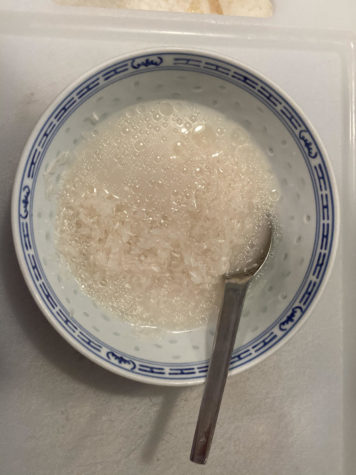
After eating many store-bought versions, I attempted to make this breakfast combo by myself. I chose to pair my rice porridge with soy sauce chow mein, as these were the simplest recipes to prepare, and the ingredients were not hard to acquire. I watched two videos by a Hong Kong restaurant chef on how to make a quick porridge and authentic Hong Kong soy sauce chow mein and took notes on the steps to prepare the food.
I started soaking the rice first, as the rice needed to be fully soaked before being boiled down into porridge. I washed and filled one cup of rice with enough water to cover the rice and added a tablespoon of oil and about half a teaspoon of salt for flavor.
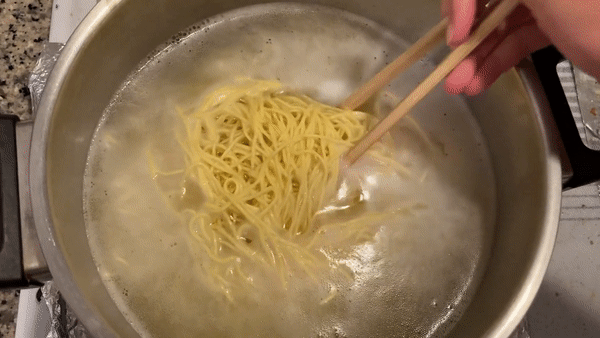 Letting the rice soak for at least 30 minutes, I started working on the chow mein. The noodles from the package were pre-steamed, but blanching them for two to three minutes ensured the noodles would not be too dry when I stir-fried them later.
Letting the rice soak for at least 30 minutes, I started working on the chow mein. The noodles from the package were pre-steamed, but blanching them for two to three minutes ensured the noodles would not be too dry when I stir-fried them later.
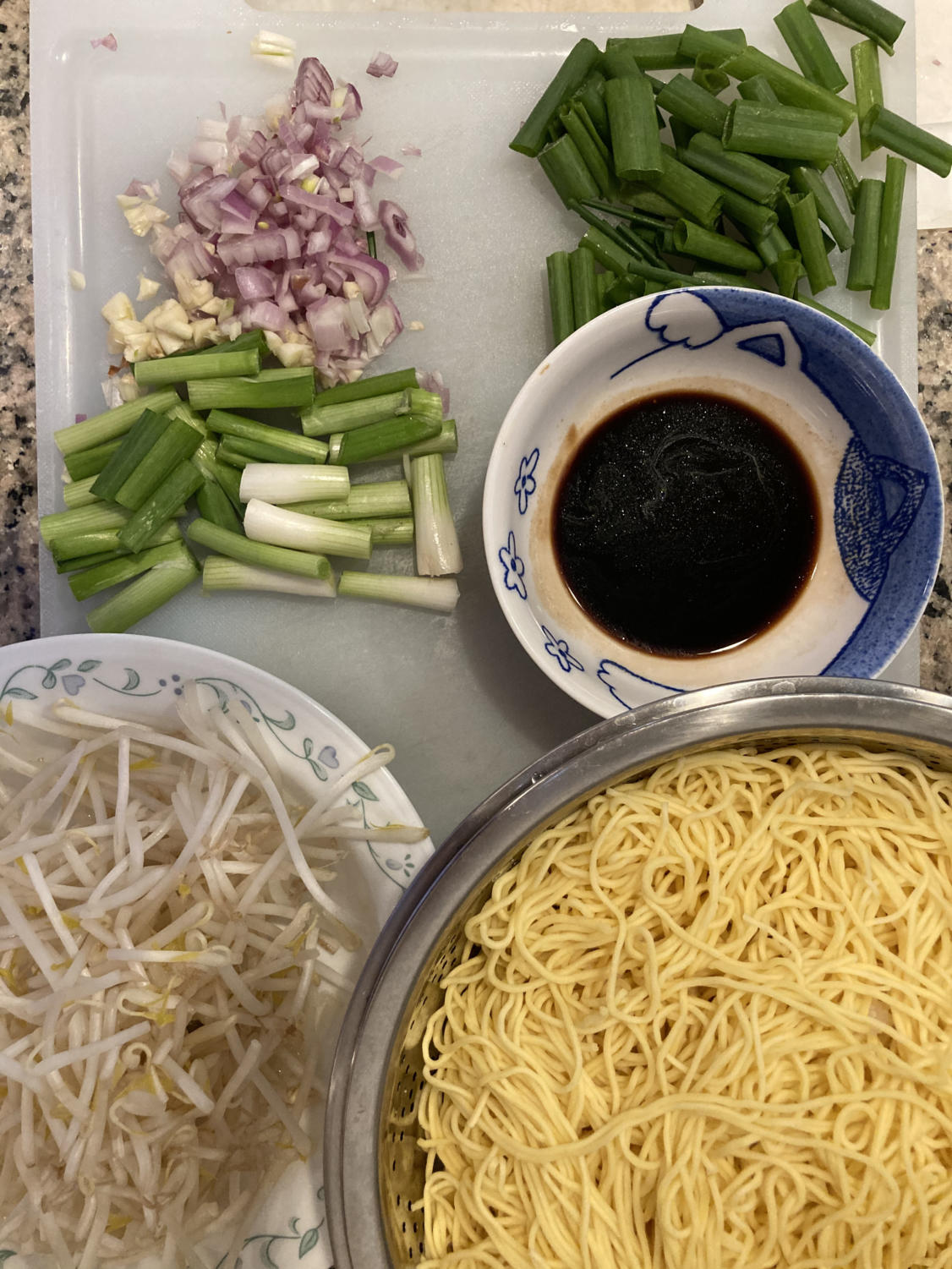
I rinsed fresh bean sprouts, chopped up some shallots and garlic and sliced green onion into one-inch pieces. I did not realize how much green onion this dish called for — I ended up using six whole sprigs of green onion! Finally, I mixed the soy sauce mixture for the noodles by combining a lighter soy sauce, a darker and sweeter soy sauce, oyster sauce (a dipping sauce usually served with steamed vegetables) and a teaspoon of sugar. I first quickly stir-fried bean sprouts, shallots, garlic and two-thirds of the green onion to give the vegetables some roasted flavor. After a quick sizzle, I removed them from the pan.
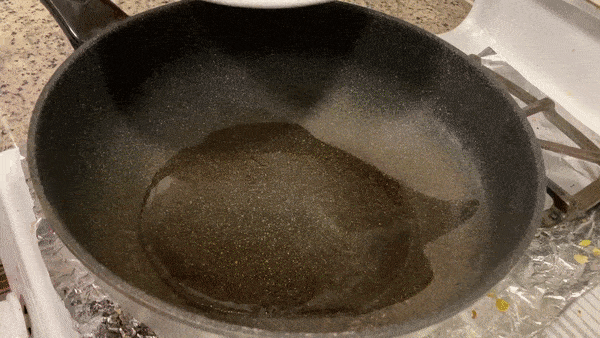 I heated the wok with more oil and poured the noodles in. Instead of stirring immediately, the recipe recommended letting the bottom fry until crispy (like a pancake) and then flipping the whole chunk of noodle altogether. I had so much egg noodle that the pancake flip did not work very well, but when I flipped the noodles over, the bottom was definitely pretty crispy!
I heated the wok with more oil and poured the noodles in. Instead of stirring immediately, the recipe recommended letting the bottom fry until crispy (like a pancake) and then flipping the whole chunk of noodle altogether. I had so much egg noodle that the pancake flip did not work very well, but when I flipped the noodles over, the bottom was definitely pretty crispy!
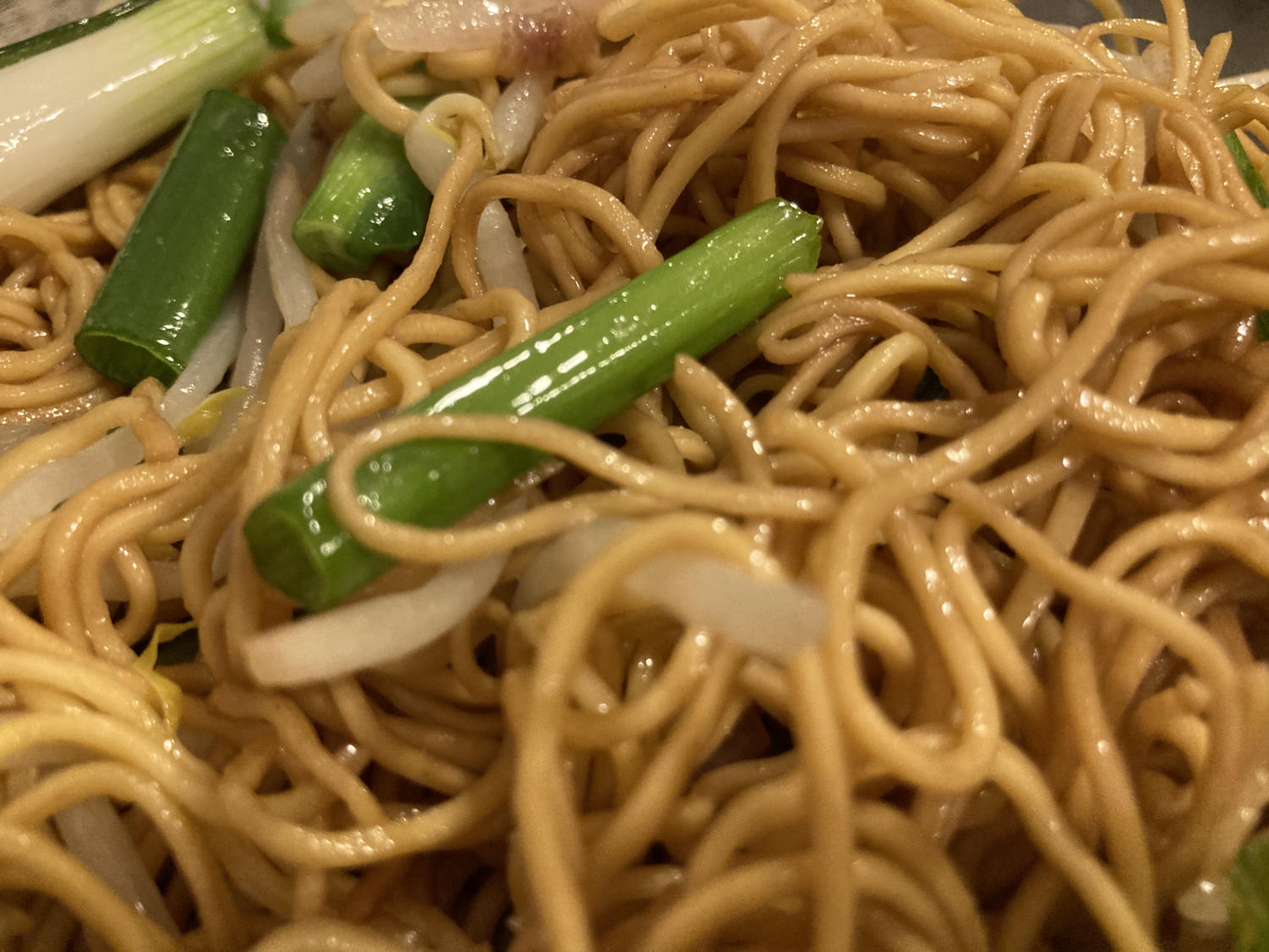
After cooking the noodles, I added the soy sauce mixture, but I soon realized that the noodles were not dark enough, as the noodles served in restaurants usually take on a dark brown color. I made more of the soy sauce mixture and added it into the pan. At last, I poured both types of soy sauce into the noodles straight from the bottle while eyeballing the proportions. After many doses of soy sauce, the noodles finally had enough sauce and looked dark enough. I tossed in the cooked vegetables and some fresh green onion, and it was finally ready to serve.
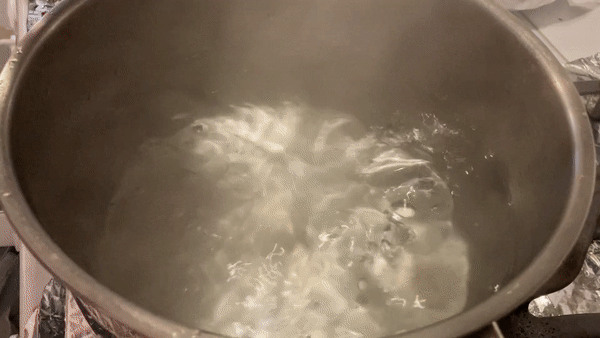 At this point, my water was finally boiling, and I added in the soaked rice. I didn’t realize how long it took to boil over 10 cups of water and boil the rice down, so I was not able to finish both dishes at the same time. I ended up constantly stirring and checking on the rice (to make sure the rice didn’t get stuck on the bottom of the pot) for about an hour before the starch from the rice was released and the mixture was thickened into porridge. Once in a while, I added salt to flavor the white porridge.
At this point, my water was finally boiling, and I added in the soaked rice. I didn’t realize how long it took to boil over 10 cups of water and boil the rice down, so I was not able to finish both dishes at the same time. I ended up constantly stirring and checking on the rice (to make sure the rice didn’t get stuck on the bottom of the pot) for about an hour before the starch from the rice was released and the mixture was thickened into porridge. Once in a while, I added salt to flavor the white porridge.
After the porridge thickened up, I ladled it into a bowl and placed a generous portion of the fried noodles onto a plate to serve. Along with a cup of tea, the traditional breakfast of porridge and soy sauce chow mein was ready!
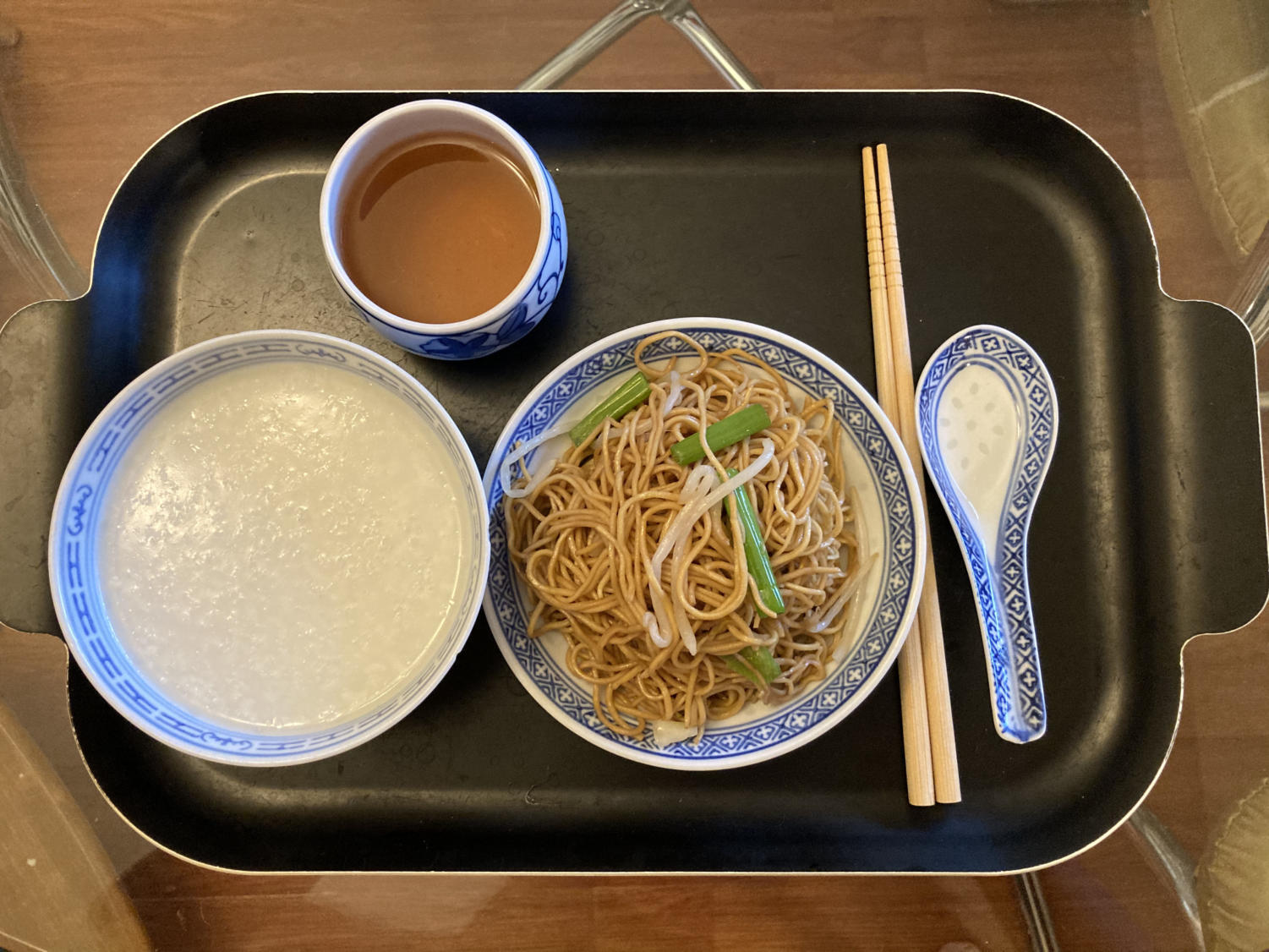
Overall, the fried noodles and the porridge were not too complicated to prepare, especially because the ingredients required were mostly pantry items that I had, and the steps were very simple. I would give myself a 7 out of 10 for how close they were to restaurant-quality porridge and chow mein. Even though some seasonings and flavors were slightly off, they tasted delicious and matched what I expected to taste in a cafe in Hong Kong! This traditional breakfast surely brought back memories of sitting down in a Hong Kong cafe and eating porridge and soy sauce chow mein as a satisfying meal to start off my day.



































































